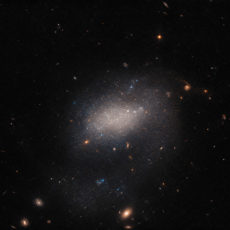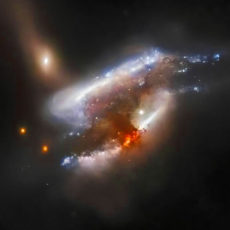
NASA / ESA’s Hubble Space Telescope captured this glowing image of the Little Dumbbell Nebula, also known as Messier 76 (M76), located 3,400 light-years away in the constellation Perseus. This planetary nebula is basically an expanding shell of glowing gases that were ejected from a dying red giant star.

Eventually, M76 will collapse into an ultra-dense, hot white dwarf. For now, we can see that the nebula is composed of a ring, observed edge-on as the central bar structure, with two lobes on either opening of the ring. A ring of gas and dust was ejected before the star burned out, and the former was probably sculpted by the effects of the star that once had a binary companion star. The shedded material created a thick disc of dust and gas along the plane of the companion’s orbit.
- Superior quality optics: Our telescope uses high-quality lenses with anti-reflection coatings, delivering bright, clear, and high-contrast images. The...
- 70mm Large Aperture: The telescope equipped with a focal length of 400mm(f/5.7) and an aperture of 70mm, good light collecting ability, imaging...
- 20X-200X Magnification: The telescope equipped with 3 eyepieces(K6mm, K10mm, K25mm) and a 3X Barlow lens that can triple the magnifying power of each...
Like an inflating balloon, the lobes are expanding into space from a dying star seen as a white dot in the centre. Blistering ultraviolet radiation from the super-hot star is causing the gases to glow. The red color is from nitrogen, and blue is from oxygen,” said the ESA.













